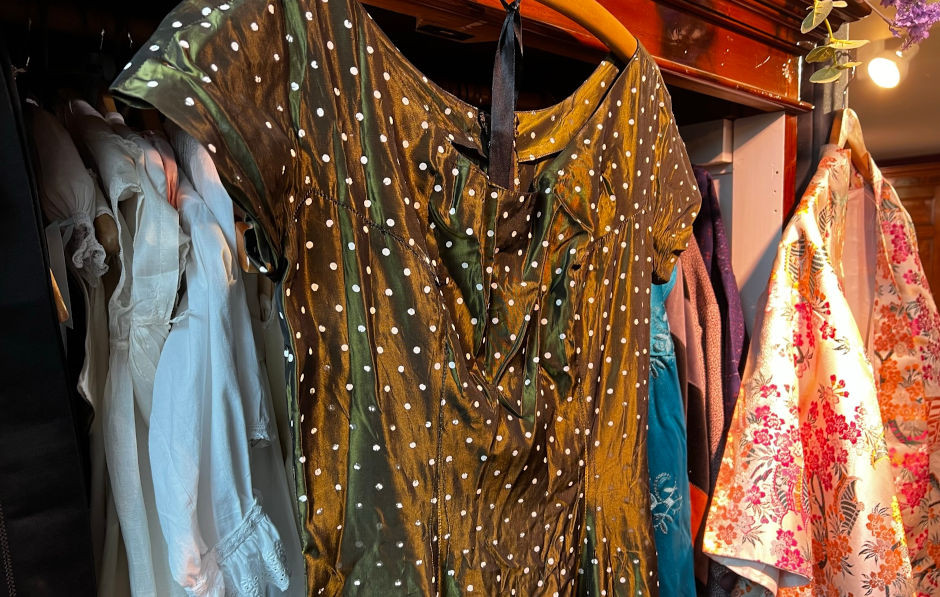
We use the terms ‘vintage’ and ‘retro’ interchangeably when we talk about clothes, but what do they each mean? Our guide examines the difference between vintage and retro clothing and why it’s so popular.
What is vintage clothing?
In the fashion industry, the term ‘vintage’ applies to clothing between 40 and 100 years old so today, vintage clothing items will date from the 1920s through to the 1980s.
Features of vintage clothes
Vintage clothes are, first and foremost, authentic pieces of the age. That is, they are made from original fabrics, using original patterns and sewing techniques and were produced in the era.
Vintage clothing differs from contemporary fashion in that it will feature original details such as oversized lapels, wider legs, pleating. It is also worth noting that original vintage clothing will have smaller proportions than today’s clothes, as we have grown and changed shape over recent generations.
The construction of vintage clothing differs too. Much of the finer detailing was hand stitched and pieces were often tailored for a precise fit.
What is retro clothing?
Where vintage clothing is original and dates from the time period, retro clothing has been made in the style of a previous era and mimics an older style. It doesn’t pretend to be original and will often be labelled ‘vintage inspired’.
Features of retro clothes
Retro clothes will be based on an old style or design but are often made from contemporary fabrics, using modern machinery and methods.
Following on from the point above, retro clothes will have a more modern feel while giving a nod to past times.
The term ‘retro’, the shortened version of retrospective, comes from the Latin for backwards (‘retrospectus’) and retro clothing imitates the physical appearance of fashions from the past, rather than the fabrics.
Reasons to buy vintage and retro clothing
Revival events are immersive celebrations of iconic events such as classic motor races, horse racing fixtures and the Second World War. Events can be held across a weekend or a single day and are usually staged in authentic period wear. Enthusiasts at such events will source vintage clothing dating from the 1930s, 1940s, 1950s and beyond. An event like the Goodwood Revival encompasses several decades as it celebrates the golden age, while a World War II weekend obviously focusses on a much shorter period of time.
Televised period dramas have aroused a lot of interest in vintage fashion too, and production companies and props buyers are always on the lookout for genuine pieces. There are eagle-eyed viewers who would spot a replica Hartnell 1940’s suit from a mile away, so wardrobe departments have to get it exactly right.
Vintage clothing has become popular as we have become more environmentally aware, and media attention has been brought to the unsustainable nature of today’s fast fashion industry. Vintage clothing is durable and is undoubtedly of a higher quality than modern mass produced garments, and by wearing it, it avoids being sent to landfill. Many people believe that buying vintage clothes will save the planet.
Having survived so far, vintage clothing has proved it can be reused and enjoyed by several people while still looking as good as it did originally, and for many people the quality of vintage fabrics and sewing methods will beat modern clothes every day of the week.
Where to find vintage clothing
With the demise of the jumble sale, where you could spend time rummaging through often genuine, handmade clothes to bag a bargain, there has been an increase in the popularity of the car boot sale. For traders and dealers who are often given priority access, car boot sales can offer rich pickings but for Joe Public, many of the hidden gems will be gone early on.
Online selling forums are popular but buyer beware! Unless there are lots of detailed images, it can be difficult to examine a garment closely without having it in your hands. Ask for pictures of labels to authenticate age and also of hidden areas such as pocket linings and the undersides of lapels, where damage can go undetected.
Specialist dealers start from a point of passion for their items and will have spent hours researching the authenticity of their garments; they will often be able to provide history and provenance too.
Vintage clothing at Hemswell Antique Centres
For commercial buyers and individuals alike, buying from specialist dealers takes the headache out of wondering whether your items are genuine or counterfeit. While we have a small selection of vintage clothing online, a visit in person to our centres will reveal a treasure trove of vintage items from several decades in buildings 1,2, and 3.
For trades buyers unable to visit us in person, we are able to provide virtual tours where we will accompany you on a tour of suitable items, showcasing them in minute detail.